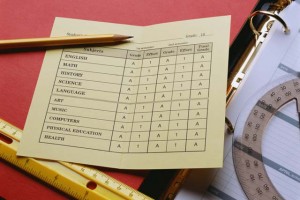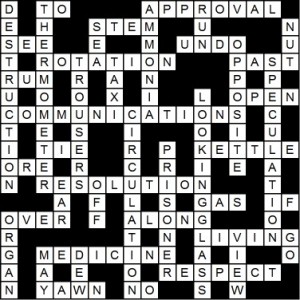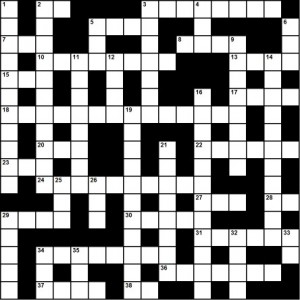Today I want to take a look at report cards. A report card is an official record of a student’s grades in the various subjects that he is taking that school year. Report cards are given quarterly in the lower grades through high school, but they are done on a semester basis in college. Each course or class that the student is taking for that term (or each subject, for the younger students through the eighth grade) will be listed on the report card, along with the grade that the student has earned for that term. Typical courses or subjects that grade school and high school students might have would be mathematics, science, history, English, PE (physical education), and art or music.
The grades are calculated based on the various assignments, tests, and quizzes that the student has had during the term. American students are given grades that range from A (best) to F (worst). Additionally, a letter grade might have a + or a – after it, indicating “better” or “worse,” respectively. Thus, the full range of letter grades looks like this, along with the percentage cutoffs for the grades:
A+ (97%), A (93%), A– (90%)
B+ (87%), B (83%), B– (80%)
C+ (77%), C (73%), C– (70%)
D+ (67%), D (63%), D– (60%)
F
Why is there no “E”? First of all, the letter “F” stands for “fail,” and is not necessarily supposed to be a continuation of the grade series. This also explains why there is no “F+” or “F–,” since it doesn’t really make sense to say that failure can be “better” or “worse”: failure is failure.
Another reason there is no “E” letter grade is purely practical: if a student received an “F,” it would be rather easy to cheat and change the grade to “E,” since the two letters are so similar.
Letter grades are generally given to older students – the real young students (for example, first and second graders) are often given grades that indicate how well the student is progressing in learning the basics. An example of this type of grading system might look like this: “superior,” meaning that the student has learned the skills necessary not only for his grade level, but has learned skills that would be expected of older students; “satisfactory,” meaning that the student has learned the skills necessary for his grade level, but not advanced skills; and “unsatisfactory,” meaning that the student needs additional work to get caught up to the skill level that he should be at.
There is more to be said about report cards, so we’ll continue this topic next week.






